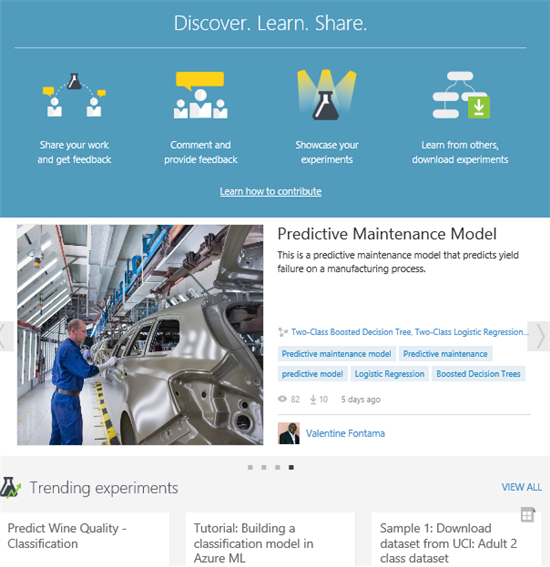
Microsoft wants to help businesses gain valuable insights from their mountains of data. The company has announced the general availability of Azure Machine Learning, a managed cloud service for predictive analytics.
“In mere hours, developers and data scientists can build and deploy apps to improve customer experiences, predict and prevent system failures, enhance operational efficiencies, uncover new technical insights, or a universe of other benefits,” wrote T.K. Rengarajan, corporate vice president of data platform at Microsoft, and Joseph Sirosh, corporate vice president of machine learning at Microsoft, on the company’s blog.
According to Microsoft, all a user needs is a browser and Internet connectivity to take advantage of Azure Machine Learning.
“We wanted to eliminate the heavy lifting involved in building and deploying machine learning technology and make it accessible to everybody,” Sirosh wrote on Microsoft’s machine learning blog.
The cloud service was first released into beta in June. The recent general availability release comes with a number of new improvements, such as:
- Simplified Web services creation: The process of creating Web services has been revamped to be more intuitive.
- Training/retraining through APIs: “Also new in this release is programmatic access to refresh Azure Machine Learning models with new data. This capability lets you retrain a model periodically, for instance when new data becomes available,” wrote Sirosh. “It also allows consumers of a model that you created to retrain the model with their own data.”
- Python and R support: Users can take advantage of the Anaconda distribution of Python along with its libraries. In addition, users can build experiments and Web services with Python, R and Microsoft’s algorithms in one workflow.
- New algorithms for learning: Azure Machine Learning comes with support for Learning with Counts, a feature that allows users to learn from terabyte-size data sets.
- Finished Web services on the Azure store: A set of Web service apps is now available on the Azure Store, such as recommendations, anomaly detection and text analytics.
- A new community gallery: A community-driven gallery has been added for users to view and use experiments from other users. In addition, users can ask questions, post comments and publish their own experiments.
In addition, Microsoft is also providing a step-by-step guide on how to transform raw data into a Web service.
Other features include new capabilities for data reading and transformation and a module for SQLite.
“With the integration of these diverse capabilities, Azure Machine Learning is now the most comprehensive data science and machine learning service available,” Sirosh wrote. “Azure Machine Learning enables businesses to wring value out of every byte of data that they store and process. The future is bright for a world optimized with data, insights and intelligence.”
More information is available here.






